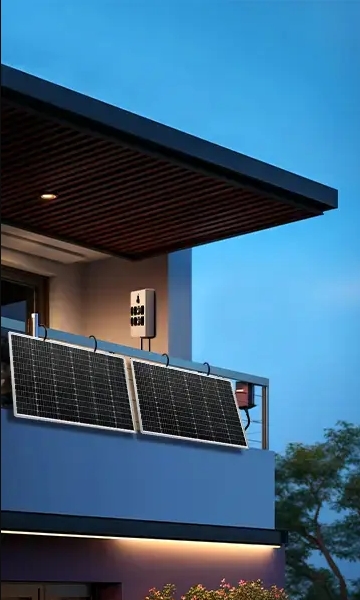My fridge runs 24/7, but I never really stopped to think how much energy it’s quietly pulling from the wall. Until my electricity bill made me pause.
A typical refrigerator uses 300 to 800 watts, but its actual energy use is lower because it cycles on and off throughout the day.
The actual usage depends on its size, age, and energy efficiency rating.
I still remember the time I left my old fridge plugged in during a short trip and came back to a higher-than-expected bill. That got me thinking—could solar help with that? Here’s what I’ve learned, especially if you’re wondering whether it’s worth running your fridge on solar power.
How much electricity does a refrigerator use?
It’s easy to overlook, but refrigerators are one of the few appliances that never take a break.
Most home fridges use 300 to 800 watts, but actual usage is often closer to one-third of that number.
Understanding real-world power consumption
Your fridge doesn’t run at full blast 24/7. It cycles. A fridge rated at 500W might only draw about 167W most of the time. Here’s a breakdown:
| Time Period | Wattage Used (est.) | kWh of Electricity Used |
|---|---|---|
| 1 Hour | 167 W | 0.167 kWh |
| 1 Day | 167 W | 4 kWh |
| 1 Month | 167 W | ~122 kWh |
| 1 Year | 167 W | ~1,463 kWh |
The actual consumption varies depending on the model, its age, and how often you open the door. Newer ENERGY STAR models are more efficient and use less electricity.
Different Types, Different Power Needs
Think about a small mini-fridge. It uses much less power. Maybe 50 watts. A large, side-by-side refrigerator uses much more. It could be up to 400 watts. This difference is huge.
- Size: A bigger fridge needs more power. It has more space to cool.
- Age: Older fridges are less efficient. They have old parts and insulation. My old fridge from the 90s was a monster on my bill.
- Energy Star Rating: Always look for this label. It means the fridge is more energy efficient. It uses less electricity.
The Role of Use
How you use your fridge matters. Opening the door a lot lets cold air out. The fridge must work harder to cool down.
- Door Openings: Each time you open the door, it needs more energy to get back to the right temperature.
- Location: If you put your fridge in a hot place, like a garage, it uses more power. It must fight the heat.
How much does it cost to power a refrigerator?
I used to just look at the total electricity bill, never really breaking down what each appliance cost me. But once I started doing the math, I was surprised.
Running a refrigerator costs about $20 a month or $240 a year on average.
Quick way to calculate your fridge’s energy cost
If you check the yellow EnergyGuide label on your fridge, you’ll see an estimated annual usage in kWh. Multiply that by your local rate (let’s say $0.15 per kWh), and you’ll get an estimate:
- 1,463 kWh x $0.15 = $219.45 per year
If you’re in a region with higher rates, it can go up fast. That’s why many people are starting to look at alternatives like solar.
How many solar panels does it take to run a refrigerator?
This is a very common question. It is exciting to think about. You can power your home with the sun. This is what we do at XRSOLAR. Our slogan is Solar Panels Manufacturer.
To run a refrigerator, you typically need one or two 500-watt solar panels. You also need a battery for nighttime use. This setup covers the fridge’s power needs.
Matching panel power to fridge needs
A single 500W solar panel under good sunlight can generate about 2kWh per day. A fridge using 4 kWh daily would need roughly 2 panels to stay fully powered. Here’s a simple breakdown:
| Appliance | Daily kWh Needed | Panels Needed (avg. 500W) |
|---|---|---|
| Standard Fridge | 4 kWh | 2 panels |
| Mini Fridge | ~1 kWh | 1 panel |
You’ll want to oversize slightly for cloudy days or higher usage spikes—like summer afternoons when the compressor kicks in more often.
How much electricity does a home use?
A home uses a lot of power. The fridge is just one part. Lights, TVs, and air conditioning all add up.
An average home uses about 30 kWh per day. This amount can change based on the season and your habits. The average usage is around 900 kWh per month.
The Biggest Power Users
Some things use more power than others. It is good to know what they are.
- Air Conditioning: This is often the biggest power user in a home, especially in hot places.
- Heating: Electric heaters also use a lot of energy.
- Clothes Dryer: This uses a lot of power in a short time.
5kw and 10kw solar system solution are popular for home.
Frequently asked questions about powering a refrigerator
What’s the best time to run a fridge?
If you’re on a time-of-use plan, off-peak hours (late at night) are cheapest. But fridges don’t wait—they kick in when needed.
Can a battery power a fridge?
Yes. A lithium battery like the XRSOLAR Powerwall can handle your fridge easily. Most home batteries deliver 5 kW+ and store 10+ kWh.
Can a solar generator run a refrigerator?
Yes, a solar generator can run a refrigerator. Make sure the generator has enough output power. Check its watt-hour capacity. It should be big enough for your fridge.
How many watts does a small refrigerator use?
A small refrigerator, like a mini-fridge, uses about 50 to 90 watts. They are much more efficient.
How much money can solar panels save you?
This was the big one for me. I wanted to know: is solar worth it?
Solar can save you $10,000 to $30,000 over its lifetime, depending on your location and usage.
Realistic expectations and long-term value
Solar panels typically pay for themselves in 7–8 years. After that, you’re essentially generating free electricity. When it comes to long-term investment, especially for high-usage appliances like fridges, solar is one of the smartest choices.
Here’s what impacts solar panel savings:
- Your current electricity rate
- The number of panels installed
- Local weather and sunlight
- The cost of solar panel installation
Quick glance at solar costs
| Item | Average Price (USD) |
|---|---|
| Solar panel cost (per W) | $0.50 – $1.00 |
| Cost of installation (full) | $10,000 – $25,000 |
| Cost of pv panels per unit | $150 – $300 |
| Cost of solar power panels | Depends on wattage/model |
If you’re sourcing panels in bulk for commercial projects, the numbers can look even better. At XRSOLAR, we help product designers integrate panels directly into their devices—like Deivis from Belgium did with his GPS trackers.
Conclusion
Fridges use less energy than we think—but solar can save more than we expect.





0 Comments